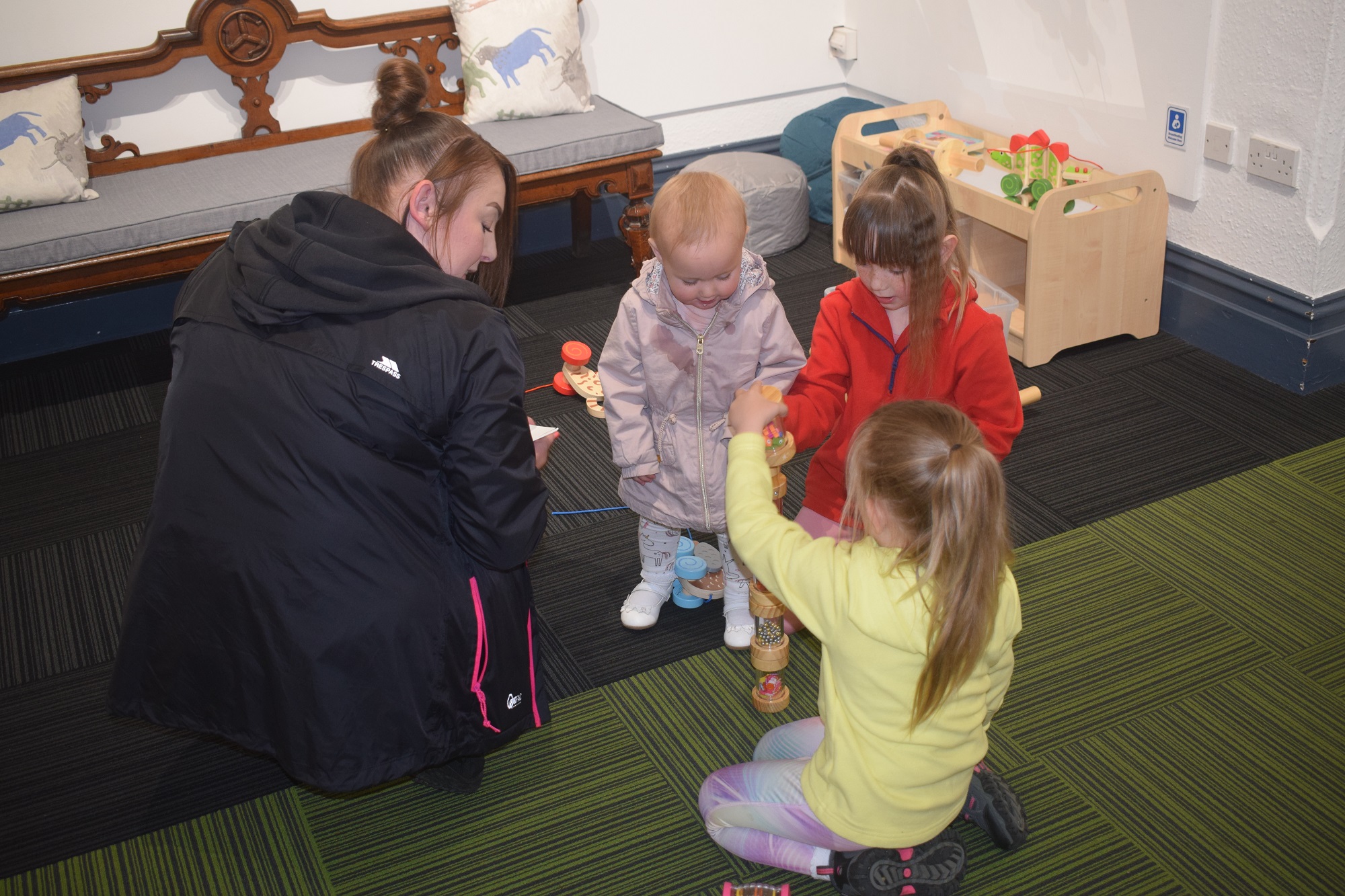Why did your organisation choose to be part of the cohort?
When we reopened after the COVID-19 lockdowns, we didn’t want to do same things we had always done. We wanted to expand our family friendly offering and our accessibility.
Before COVID-19, we ran family craft activities during the school holidays. These were always very busy. When we reopened, we changed to doing bookable events for much smaller groups. We wanted to explore using this model with groups with special educational needs and disabilities (SEND), but didn’t know where to start.
Applying for the cohort meant we had guidance and mentoring from an outside organisation that are experts in their field! We knew this would be hugely beneficial to our museum.
What was your organisation’s approach to family provision before the cohort?
Before the cohort, all our family friendly interpretation and resources were in the main museum gallery, The Wonders of the Peak. This gallery was redeveloped in 2017 and contains hands-on activities, puzzles, pull-out drawers and a ‘bear trail’ (a selection of low-level labels aimed at children). In our minds, we had ticked the ‘family friendly box’ as the main gallery is family friendly and inviting.
When our mentor visited, she pointed out that there wasn’t much for families in our other gallery spaces. We then began to watch how families used the museum and we noticed how little dwell time there often was in our other galleries.
We moved from weekly free craft activities during school holidays towards a trail model, where we produce a seasonal trail for the museum which can be used by families whenever they visit. We had never run any workshops aimed at specific groups before, but we have now experimented running workshops aimed at families with specific needs.
What did you achieve as a result of the cohort?
- Cosy Corner: an area in Gallery 2 with cushioned seating area and toy box
- Art Cart: an Art Cart in the foyer with craft activities and bean bags
- Social Story: new online guide for the website so that families, particularly those with additional needs, know what to expect at the museum
- Breastfeeding Welcome: reacquainted ourselves with the scheme and ran training for staff
- Staff Training: worked on improving our family trails and worksheets
- SEND Workshops: facilitated two workshops aimed at families with additional needs
We also developed a plan to use an underused space in the museum to create a dedicated under 5s area.
In focus: Art Cart
The Art Cart in the foyer has worked really well. It is simple, but effective.
We repurposed an old office cabinet by covering it in Foamex boards. These colorful boards contained images from our collections, as well as open-ended questions. The end result is that an old, unused cabinet is now a bespoke activity cart for the museum. It is filled with paper, colouring sheets, magnifying glasses, fossils, mirrors and more. We have surrounded it with colourful bean bag seating and it has become a busy focal point for families of all ages.
Budget
In total, the cost for the main areas was £823.50.
Art Cart
- Foamex boards: £74.75
- Art Cart resources: £65
- Bean bag seating: £80
Cosy Corner
- Bespoke cushion for Cosy Corner in Gallery 2 :£160
- Toy box cabinet: £243.75
Social Story
- Freelance for digital story: £200
What was your organisation’s approach to families after the cohort?
Being part of the cohort has changed the mindset of the museum and created a lot of discussion on how we can improve our offer for families. Everybody has got on board with these discussions and we have had lots of input and support from colleagues. Due to COVID-19, we had put away some of the family resources and books, but being part of the cohort gave us the confidence to put these back out again safely.
We have had great buy-in from our colleagues for the dedicated under 5s area. The biggest change going forward is the plan to use an underused space to create a dedicated under 5s area. We have needed the support of everyone in the museum to make this happen as the area is currently used by different people as a working and storage space. It has really given us the chance to look at the museum with fresh eyes.
Top tips
- Speak to all members of your team.
We found that our Front of House team had great ideas on how we could improve our family offer as they see things that staff in offices don’t, such as visitor dwell times and informal feedback. - Try and look at your museum with fresh eyes.
We found our mentor visit really useful as she pointed out quite obvious things that we hadn’t thought of. - Keep it simple.
We were worried some of our improvements were a bit basic and analogue and that they wouldn’t hold the attention of families for long. We were wrong; sometimes the simple ideas (colouring in, magnifying glasses, mirrors) are the best.
Tags: Case Study, East Midlands
Categories: Case Studies
Audience: Family

